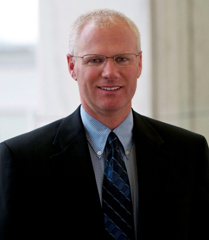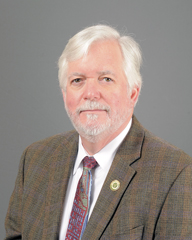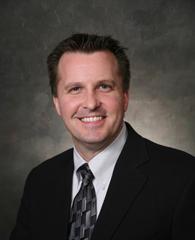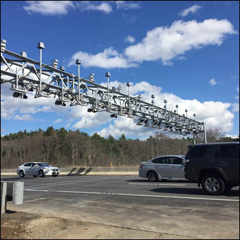Transportation Systems Management and Operations: TSMO Strategies Lead State DOT SuccessesPrintable version [PDF 1.7 MB]
U.S. Department of Transportation FHWA-HOP-19-086 A focus on transportation systems management and operations (TSMO) has proven to yield positive results. This is especially true for the dozens of state transportation departments across the country currently implementing TSMO strategies to address safety, congestion, and reliability challenges. To understand the role state departments of transportation (DOTs) are playing in the development and advancement of TSMO, see what these state DOT leaders have to say about their experiences. DOTs are transitioning from being infrastructure providers to being mobility managers. 
"When I talk about TSMO, I am talking about a discipline that needs to permeate throughout the agency. That's been the most interesting evolution — starting to look at operations as influencing and being influenced by everything we do. Operations has become equally as important as infrastructure. There's a reason we're more than the highway commission. We are no longer just builders of the roads and bridges. We are actively and proactively managing the system to get the highest capacity and the highest return on investment from it. Simply, it's a way of buying additional lane miles without actually putting down more pavement." –Mark Lowe, former Director, Iowa DOT 
"If you have unlimited resources in funding and geographical resources in being able to expand all roadways, then you probably don't need to worry about TSMO. But, I haven't seen any of those DOTs, so in order to be the most efficient user of taxpayer money, TSMO is the solution. You can increase capacity without building capacity." –Jason Davis, Utah Department of Transportation, Operations Director  US-60 and I-10 in Phoenix had the highest number of serious and fatal crashes in the Arizona Department of Transportation System. The department's TSMO division identifed, engineered, and implemented a restriping project to improve operations and increase safety for motorists. Photo: Arizona DOT.  "Transportation Systems Management and Operations, to me, is all the things the average person never thinks about unless it's broken. This includes everything to keep the system operating and people and things moving. We have a long history with Operations, especially since hosting the 1996 Olympics. We had to figure out how to manage our system better, to do things that are simple but actually innovative. Going forward, it's about employing more technology on our corridors." –Commissioner Russell McMurry, Georgia DOT 
"We [Washington State Department of Transportation] are really good at developing and delivering projects. What we're trying to do as an agency is pivot from just being good at projects to being true stewards of a multimodal transportation system. Project development and delivery is part of that, but you really need to get everyone on your team to think about moving people, goods, etc. through your infrastructure. It has to be multimodal. Think of people who walk, take transit, ride bikes, drive, etc. Get the most out of the infrastructure you have, and figure out how you'll use the technology being deployed in the U.S. and around the world, to get the mobility your citizens demand. TSMO is right at the forefront of that." –Secretary Roger Millar, Washington State DOT 
"I like to refer to TSMO as the heartbeat of transportation infrastructure in Delaware. It's all of our systems and how they talk to each other. Whether it's dealing with an emergency situation, a natural disaster, or just regular day-to-day congestion, being able to tweak that system is so important." –Secretary Jennifer Cohan, Delaware DOT 
"There is proof of the impact, and we're seeing great benefits from utilizing TSMO eforts. There are tools out there that all state agencies can use. I strongly support our focus on TSMO, as does my director, and we're seeing great rewards for our TSMO efforts at our DOT." –Brent Cain, Arizona Department of Transportation, Division Director for Transportation Systems Management and Operations 
"When operating a transportation system, it is sometimes diffcult to see the benefits. You can go out and cut a ribbon on a brand new roadway. People can see that, and it's easier for you to say 'this is the value we've provided for your investment in this transportation system.' When you're operating a transportation system, it's much more diffcult to be able to quantify the value for the public's investment, so you have to be more diligent. You have to understand the performance of your system today. Look at those measures — travel time reliability, delay, incident clearance times — and ask how you can improve those measures. Those are critical for mobility and safety. CEOs should ask some of those questions." —Executive Director Carlos Braceras, Utah DOT  Massachusetts DOT became a cashless toll state with its conversion to all electronic tolling in 2016, which improved traffic flow and increased reliability for highway drivers. Photo: Massachusetts DOT. For more information, contact Tracy Scriba, FHWA Office of Operations, at Tracy.Scriba@dot.gov or AASHTO Associate Program Manager Pat Zelinski at PZelinski@aashto.org For more examples of TSMO applications and how they are providing real benefits, see FHWA's brochure on TSMO in Action at https://ops.fhwa.dot.gov/publications/fhwahop17025/index.htm |
|
United States Department of Transportation - Federal Highway Administration |
||